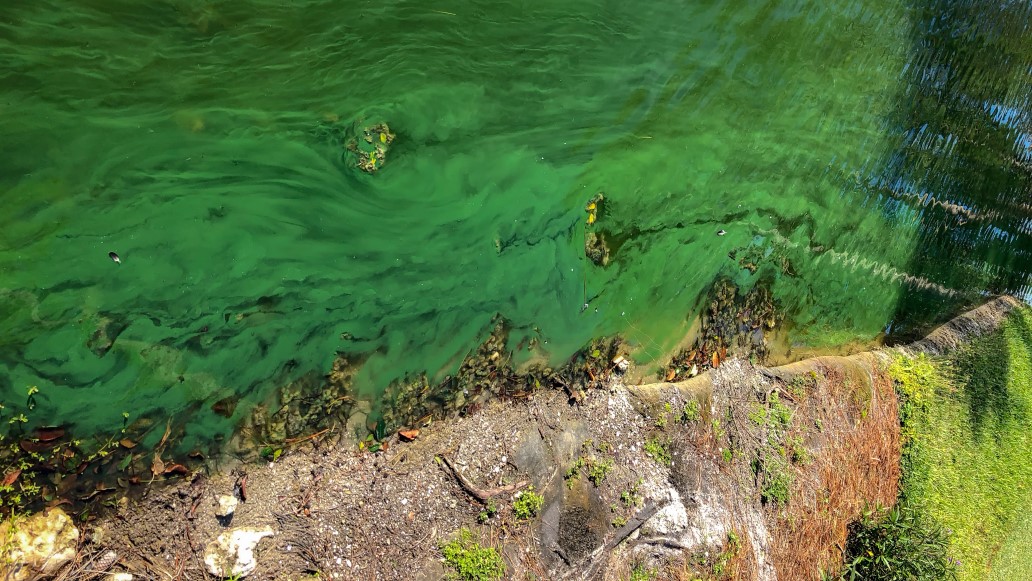Water quality: a critical pillar of biodiversity

Lisa Beauvilain, IMPAX Asset Management and Johan Florén, Sjunde AP-fonden AP7
This article was first published in Environmental Finance.
Executive summary
- Despite growing recognition of biodiversity’s critical importance to global society, water impacts on nature are systematically underestimated. Water quality issues are also challenging to address.
- A tightening regulatory environment supports innovative approaches and technologies that address water quality issues throughout the water system. This creates opportunities for solutions providers.
- Local context is almost always missing from company water reporting, despite it being critical to understanding water quality-related impacts. Disclosure standards should go further in their requirements
Water quality and the state of biodiversity are intimately connected. Nature depends on clean water and, less obviously perhaps, clean water depends on nature.
Poor water quality contributes to direct drivers of global biodiversity loss, particularly in the form of pollution and invasive non-native species. It also impacts human health as highlighted in the UK and the US, for instance, by recent sewage leaks and lead pipe contaminations.
The spotlight is also increasingly turning to the profound effects of water pollution on nature. The toxic effects of pollutants like arsenic and mercury on wildlife and humans alike have long been understood. Awareness of other emerging pollutants, such as PFAS (known as ‘forever chemicals’), is rising. Studies have linked exposure to certain levels of PFAS, which are used in a range of consumer goods and clothing, to long-term human health problems including cancer, liver disease and fertility issues. These man-made substances have been found in hundreds of animal species.1
Improving water quality has historically proven difficult, even in developed countries. In this article, we discuss how water quality issues that harm natural capital can be mitigated at stages throughout the water cycle, with a tightening regulatory environment supporting innovative approaches and technologies.
The nexus of water quality and biodiversity
As a report by Impax and Swedish pension fund AP7 highlighted in 2021, there are few standards or globally agreed frameworks to define water quality and pollution. This results in an absence of measurement and reporting. There has been much more focus on water availability, which is easier to both measure and address.
Despite growing recognition of biodiversity’s critical importance to global society, including in efforts to address climate change, water impacts on nature are systematically underestimated. Yet illustrations of the interdependence of biodiversity and water quality are evident throughout the water cycle.
Source: Environmental Working Group, 2023
One of the clearest examples of biodiversity risks posed by water pollution is eutrophication, the process whereby high levels of nitrogen and phosphorus accumulate and feed algal blooms that suffocate aquatic life. Excess nutrients get into the water system from the over-use of fertilisers in agriculture. In some parts of the world, ‘dead zones’ have too little oxygen for marine life to survive. In the US and elsewhere, algal blooms have killed dolphins and other sea life.2
Like other water quality issues, the human drivers of eutrophication are challenging to address. We are encouraged, though, as interventions and innovations to improve the health of crucial ecosystems show great promise.
Opportunities to address water quality issues
We believe companies that improve water quality, either in their operations or through their products, can not only add value to the natural environment but also tap into sizeable market opportunities. We conceptualise them below as ‘upstream’, ‘midstream’ and ‘downstream’ solutions.
- Upstream: Water companies that invest in protecting their catchment areas deliver what we term ‘upstream’ solutions. By working with farmers and landowners, utilities like Severn Trent can reduce agricultural and other runoff from entering rivers. Others have bought forests that surround reservoirs, protecting watersheds and supporting natural habitats.3 These interventions can save utilities – and their customers — money compared to grey infrastructure like treatment plants.
Increasingly sophisticated products can prevent contaminated water from entering water courses, ranging from pipe caps and filters to mini treatment systems with space-saving spiralled filters. US company Advanced Drainage is one of the leaders in solutions for managing stormwater and preventing it from flooding into local ecosystems untreated.
- Midstream: ‘Midstream’ solutions are those that assess water quality and improve usage. Sampling and monitoring are critical to understanding the scale of issues including the presence of PFAS in water courses. US company Agilent is one of the leading providers of testing and reporting solutions for PFAS and other pollutants.
Industrial processes like making semiconductors can be highly water intensive, requiring high levels of extraction that can place pressure on local ecosystems. Solutions that enable producers to shift from linear to circular water consumption can therefore help avoid negative environmental impacts. Chipmaker TSMC addressed the recent drought in Taiwan by building a plant that treats and reuses industrial water, for instance.4
- Downstream: ‘Downstream’ solutions treat water to make it usable for drinking, bathing or discharge back into the natural environment. Water filters screen dirt and sediment, while reverse osmosis uses a membrane that can also remove dissolved chemicals and salts.
Emerging new technologies also include photocatalytic, which use light to remove contaminants. This has been applied in the shipping sector to help protect marine ecosystems from the threats posed by invasive non-native species which travel all over the world in ballast tanks. Swedish company Alfa Laval’s chemical-free treatment technology uses UV light to ensure no microorganisms are unintentionally released into one habitat from another.
Regulatory focus should boost solutions
There is growing recognition among governments that the current rate of biodiversity loss is unsustainable and nothing less than a global emergency. Though there is much work to be done in implementing commitments, we were very pleased to see new commitments at the COP15 biodiversity summit in December 2022.
Water too has been in greater international focus, with an historic international agreement on ocean protection reached in early March. Under the High Seas Treaty, protection areas will extend to 30% of international waters by 2030. Marine life will be supported by limits on fishing, shipping and mining activities. Meanwhile, the first UN conference on freshwater in 50 years is being held this March and focuses on fast-tracking water action.
Several major economies are implementing rules that aim to improve water quality. The European Water Framework proposes heavier restrictions on sewage and limits on agricultural runoff to address eutrophication. As a result, the Baltic Sea, home to seven of the world’s 10 largest marine dead zones, has become the first ‘macro-region’ targeted by the EU. Meanwhile the UK government has proposed a plan that would require water companies to invest £56bn over 25 years in infrastructure to reduce the use of storm overflows for sewage.5
PFAS are also in regulators’ sights. The US Environmental Protection Agency lowering maximum legal levels of certain PFAS in drinking water to near-zero.6 The EU meanwhile is looking to ban the production, use and sale of all PFAS, with scientific committees working towards a vote in 2025.7
Flowing in the right direction
As water flows downstream and moves around oceans, human activities influence its quality and have direct and indirect impacts on nature that are increasingly understood. Like biodiversity, though, water is often not priced as a scarce and valuable resource and so continues to be mis-used and exploited.
More detailed water reporting would help investors better identify and assess risks facing companies. Local context is almost always missing, despite it being critical to understanding water quality-related impacts. In a watershed where water is very scarce or polluted, for example, each megalitre of water treated – an impact metric that Impax uses – is more impactful than in one with abundant, clean water.
Proposed sustainability reporting frameworks do not go far enough, unfortunately. Although International Sustainability Standards Board (ISSB) disclosure standards do require that companies in some water-intensive industries report what proportion of their plants are in water-stressed areas, this is not enough detail for risks and opportunities to be quantified. Location-specific water impact analysis is only made possible by detailed disclosure of important physical assets’ geolocations.
Despite measurement and reporting challenges, we are encouraged by growing government focus on water quality and biodiversity issues. In this context, we believe that companies with solutions to improve water quality, upstream to downstream, can benefit from regulatory tailwinds and help address pressing environmental challenges.
References to specific securities are for illustrative purposes only and should not be considered as a recommendation to buy or sell.
